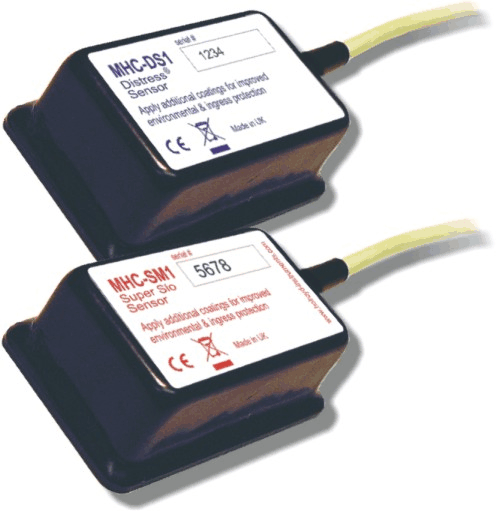 It is common knowledge that a range of Condition Monitoring (CM) techniques are available such as Vibration Analysis, Oil & Wear Debris Analysis, Thermography and Acoustic Emission. Each of these techniques has its own particular areas of strength and in this regard the Acoustic Emission (AE) technique has the noted advantage of giving real time information with early sensitivity to faults and applicability to a wide range of rotational speeds including slowly rotating (source : ISO 22096).
It is common knowledge that a range of Condition Monitoring (CM) techniques are available such as Vibration Analysis, Oil & Wear Debris Analysis, Thermography and Acoustic Emission. Each of these techniques has its own particular areas of strength and in this regard the Acoustic Emission (AE) technique has the noted advantage of giving real time information with early sensitivity to faults and applicability to a wide range of rotational speeds including slowly rotating (source : ISO 22096).It follows that on-line monitoring systems should be capable of integrating the required mix of CM technologies for each particular spread of machine types in an installation. However the use of AE for machinery condition monitoring has historically been viewed as a separate specialist field and it has not been easy to integrate it into third party or industry standard monitoring and control systems. To address this issue Holroyd Instruments has developed a range of smart AE sensors, which have finally opened the door to the wider use of AE for continuous monitoring alongside, say, vibration, and temperature sensors.
Holroyd Instruments is a world leader in the industrial application of AE techniques to machinery condition monitoring and has pioneered autonomous signal processing algorithms which further extend these advantages by removing the need for machine specific interpretations. Whilst these algorithms have been successfully used for many years in a range of portable instruments it is only recently that they have been integrated into smart AE sensors (MHC-DS1 and MHC-SM1). These compact sensors provide simple but effective continuous monitoring of rotating machinery from motor speeds down to 0.25 rpm. They are ideal for incorporating into third party systems for data acquisition, monitoring and alarm purposes, since they have high level, slowly varying outputs of field proven signal characterisations.

In some applications however there is no infrastructure to accept trendable sensor outputs and this is typical when retro-fitting to existing installations. In these cases switched sensor outputs are preferable since they can be readily wired into spare input channels on PLC’s. Acknowledging this requirement switched alarm outputs are also built into the smart AE sensors. The alarm levels and hold-off periods, to discriminate against false triggers, are user adjustable and stored in the sensors own non-volatile memory.
The interest generated by the successful development of these smart AE sensors is fuelling further demands from the technology. For example, a growing interest with some users is in the monitoring of non-rotating and intermittent machine actions. The high signal to noise ratio of AE makes direct time domain analysis of AE signals useful in a very wide range of industrial applications. To address these applications a new development is the 24/7 Ultraspan sensor which continuously outputs a logarithmically compressed dynamic envelope of the AE signal requiring only a +24 VDC electrical supply. In this way the pertinent features of wide dynamic range and high frequency AE signals are transformed into a very easily handled form.
Another area of growing interest amongst CM specialists, which can also be addressed with the 24/7 Ultraspan sensor, is in the diagnostic analysis of rotating machinery. In this role the dynamic envelope signal is viewed in the frequency domain as a spectrum to reveal defect repetition frequencies. The high sensitivity of the AE technique combined with the benefits of envelope spectra enable the clear identification of high resolution peaks, even on very slowly rotating machinery.
As exposure to the unique capabilities of AE spreads, evermore diverse applications are being unearthed which have previously proven difficult for other CM technologies. Our experience is that the challenges posed by these applications are especially suited to being solved in a cost-effective way by highly integrated application specific (smart) AE sensors.
To find out more about smart AE sensors or other innovative Condition Monitoring products contact :
Holroyd Instruments Limited, Matlock, Derbyshire, UK, DE4 2AJ
Tel : +44 (0)1629 822060
Email : This email address is being protected from spambots. You need JavaScript enabled to view it.
TM : MHC-DS1, MHC-SM1 & 24/7Ultraspan are Trademarks of Holroyd Instruments Limited
© Copyright Holroyd Instruments Limited 2009
About the author
Trevor Holroyd is the Managing Director of Holroyd Instruments Limited and has been continuously active in the development and use of AE for industrial monitoring since 1974. For more information about the contents of this article he can be contacted by email : This email address is being protected from spambots. You need JavaScript enabled to view it.

